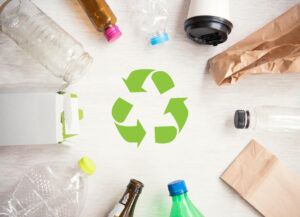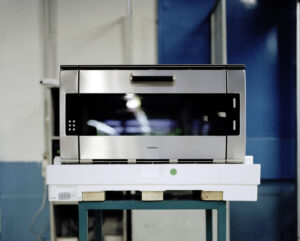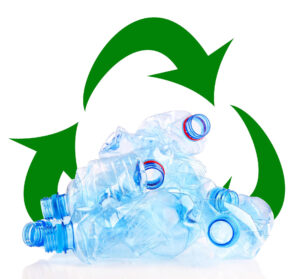Rapid urbanization and changing lifestyles have encouraged the expansion of plastics application in a wide range of industries such as food and beverage, automotive, electronics and electrical, home appliances, and healthcare. It is no surprise that the global production of plastics has reached 400 million tons each year with projected 35 billion tons produced by 2050, as announced during the United Nations Climate Change Conference (COP27) held in November 2022. Plastic consumption – especially for single-use plastics – has created a huge challenge to our environment. The industry now spares no effort to intensify innovations towards a circular economy for sustainability development.

More plastics than fish in the sea by 2050, a finding says
Based on a report by World Bank, around 2 billion tons of municipal solid waste is being generated every year and this is expected to reach 3.5 billion tons by 2050. For the fast-growing regions of the world, such as East Asia and Pacific region, their plastic waste generations are expected to increase by 70% by 2050. It is imperative for the governments in this region to act fast.
Another finding by the Ellen MacArthur Foundation claimed that the world’s oceans could contain around 937 million tons of plastic compared to 895 million tons of fish by 2050. The coronavirus pandemic that began in 2020 pushed single-use plastics usage by as much as 300%. These findings have put the plastics industry at task to come up with urgent solutions to alleviate the burden to the planet – and the circular economy model has been identified as the best option.
From linear to circular – creating a more sustainable solution to plastic use
The plastics industry has long been applying the linear model, or “take-make-dispose” approach where plastics are produced, used, then disposed as waste, bringing challenge to waste management and environment protection.
As a solution, the circular economy concept aims to reduce the amount of plastic waste generated by applying a “closed loop” system where plastics is produced, used and re-used in a continuous cycle to prevent its leakage to the environment. This model is seen as an appropriate way to address the core of the issue, especially for single-use plastics, as redesigning how plastic products are taken, made, used and reused to minimize plastic waste.
Packaging, for example, accounts for the largest segment of plastic applications. Circular economy as applied in packaging requires innovations in production technologies and materials to ensure that the plastic products are reusable, recyclable, or compostable. It also places responsibility to businesses engaged in plastic packaging to ensure that disposed items are collected, recycled or composted, for re-use as input in the manufacture of new product. The vision for a circular economy includes reducing the need for single-use packaging and transitioning towards 100% reusable, recyclable or compostable to alleviate the plastic waste problem. In a study done by Nanyang Technological University in Singapore, it was found that reusable plastic bags are actually more environmentally-friendly than those from paper and cotton, but only in cities and countries with efficient waste management system.

Enhancing recycling and advancing the use of recycled materials
One of the main thrusts of circular economy is the increased rate of recycling. Post-industrial waste and post-consumer waste need to undergo recycling in order for them to be re-used. Recycling technologies have seen tremendous improvements in terms of speed, efficiency and cost-saving advantages.
Recent trends in recycling indicate the growing interest in chemical recycling technologies, which break down plastics into building blocks to convert them into secondary raw materials that can be used to produce new raw materials. The growing popularity of pyrolysis, an advanced recycling technique where thermal decomposition of materials at high temperatures in inert atmosphere is applied, has attracted attention especially since it has been found to be ideal in recycling polyethylene (PE) and polypropylene (PP). Chemical recycling is ideal for multi-layered or heavily contaminated plastic; another advantage is that the process can turn out high quality recycled material. BSH Hausgeräte GmbH for the first time uses BASF’s Styropor® based on a raw material made from chemically recycled plastic waste as a packaging material for selected large appliances of its luxury brand Gaggenau without compromising the protection properties for transportation.
But the prevailing technology for plastic recycling remains mechanical recycling – which includes steps such as sorting, washing, shredding, grinding or granulating. Mechanical recycling has become better and more efficient in turning out good quality secondary materials. Digitalization, artificial intelligence and automation have contributed to more efficient recycling operations that many companies offering recycling technologies have added these to the capabilities of their machines.
As the market for recycled plastics has been promising, recycling systems have been upgraded to meet rising demands. Bottle-to-bottle recycling has been taken to a higher level in processing post-consumer PET bottles to high-grade recycled PET (rPET) material, making it possible to produce bottles from as high as 100% recycled PET (rPET). Also, bottle-to-bottle recycling has been able to meet the high safety standards required for food packaging with no risk of contamination. Another innovation is the development of techniques in recycling of multilayer flexible packaging that now, 100% of multilayer film production waste can be recycled.
Processing technologies are now well able to adhere to the circularity targets. Injection molding systems, extrusion technologies and blow molding systems capable of processing recycled materials are the result of huge investments poured into R&D by companies to adapt to this trend. In the same manner, materials solutions geared toward improving the properties of recycled resins, such as additives and stabilizing agents, have been supporting the plastics industry’s bid for sustainability.

Asia’s adoption of circular economy presents huge opportunities
The adoption of circular economy in the plastics industry presents multiple opportunities for recycling technologies, plastics production systems that are capable of processing recycled materials, and new materials with recycled content or content from renewable sources. It also offers opportunities for producers of finished plastic products who are eager to meet market trends and consumer preference for environmentally-friendly products. It is projected that by 2030, a circular economy could generate an additional US$4.5 trillion in annual economic output, according to the United Nations Environment Programme.
Countries in Asia have started to provide the necessary framework towards a circular economy. China is spearheading this direction as the country has started its circular economy journey since the 1990s. One of the policies is the “Dual Carbon Goals”, which aims at bringing carbon emissions to a peak before 2030 and achieving carbon neutrality before 2060. Today, China’s strategy promotes circularity – reduce, recycle and reuse into the production processes as embodied in its Development Plan for the Circular Economy under the 14th Five-Year Plan covering 2021-2025.
India has also adopted the circular economy route with its government implementing policies and projects which could potentially bring US$624 billion in annual by 2050.
Southeast Asian countries are also adopting the circular economy model with a framework approved by the ASEAN Economic Community (AEC) in October 2021. This opened up the region’s plastics industry to utilize the latest technologies in recycling and production systems that can very well process recycled materials to produce new products.
Innovations for Circular Economy at CHINAPLAS 2023
At CHINAPLAS 2023, Asia’s No. 1 plastics and rubber trade fair, more than 3,900 exhibitors will present their latest innovations in adherence to the circular economy concept.
To showcase and highlight how the industry is transitioning towards a circular economy, 4 eco-friendly thematic zones, including Recycling Technology Zone, Recycled Plastics Zone and Bioplastics Zone, Eco-friendly Additives Zone, will be set in CHINAPLAS 2023. Over 200 machine makers and materials providers are about to showcase full array of sustainable solutions in these 4 theme zones with over 13,000 sqm, to meet the demand of both large enterprises and SME manufacturers.
The Online pre-registration to CHINAPLAS 2023 is open till April 11, 2023, 17:00 (GMT +8:00). Visitors can enjoy an early bird discount at RMB 50 or USD 7.5 (Original Price: RMB 80) for a four-day pass. Pre-registered visitors shall receive their Visitor e-Badge or e-Confirmation Letter in advance for fast entry. For more information about the exhibition, please visit www.chinaplasonline.com.








